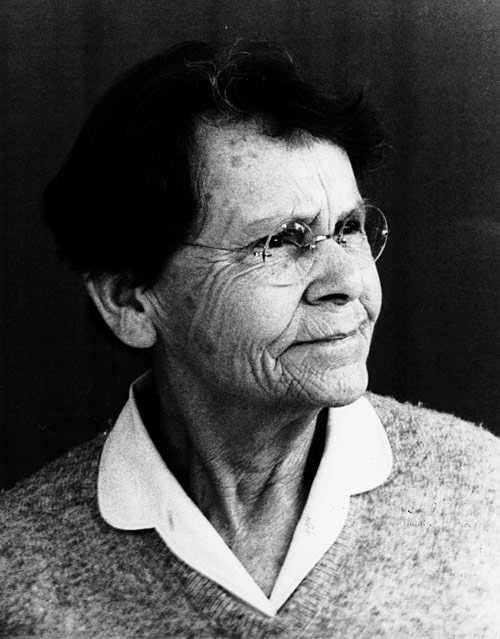
Barbara McClintock and Transposable Genetic ElementsMcClintock Honored · Woman of Science · Educational Material · Resources with Additional Information Barbara McClintock's remarkable life spanned the history of genetics in the twentieth century. ... [T]he science of genetics, to which McClintock made seminal contributions both experimental and conceptual, has come to dominate all of the biological sciences, from molecular biology, through cell and developmental biology, to medicine and agriculture. ...  Courtesy of the Cold Spring Harbor Laboratory Archives McClintock made her first significant contribution as a graduate student, developing cytological techniques that allowed her to identify each of the ten maize chromosomes. These early experiments laid the groundwork for a remarkable series of cytogenetic discoveries ... [for which] McClintock was the intellectual driving force ... . These include identification of maize linkage groups with individual chromosomes, the well-known cytological proof of genetic crossing-over, evidence of chromatid crossing-over, cytological determination of the physical location of genes within chromosomes, identification of the genetic consequences of nonhomologous pairing, establishment of the causal relationship between the instability of ring-shaped chromosomes and phenotypic variegation, discovery that the centromere is divisible, and identification of a chromosomal site essential for the formation of the nucleolus. ... [McClintock was] interested in chromosome breakage, making important observations on the behavior of chromosomes lacking telomeres. ... These observations so intrigued her that she began an intensive investigation of the chromosome-breaking locus. Within several years she had learned enough to reach the conclusion, published in 1948, that the chromosome-breaking locus did something hitherto unknown for any genetic locus: it moved from one chromosomal location to another, a phenomenon she called transposition. The study of transposable genetic elements and transposition became the central theme of her genetic experiments from the mid-1940s until the end of her active research career. ... [After meeting "McClintock, Fedoroff]" was prompted to read her papers from beginning to end ... [and] was intrigued with what [she] found to be a marvelous genetic detective story. ... [Their] relationship began in earnest ... during the summer of 1979 at the Brookhaven National Laboratory, where we ... [interacted with] Ben and Frances Burr. ... By the time the maize elements were cloned and their molecular analysis began, the importance of McClintock's discovery of transposition was widely recognized. ... [I]n 1983, thirty-five years after publication of the first evidence for transposition, McClintock was awarded the Nobel Prize for Physiology or Medicine ["for her discovery of mobile genetic elements"] . - Edited excerpts from Barbara
McClintock by Nina V. Fedoroff
Top Resources with Additional InformationAdditional information about Barbara McClintock and her research is available in full text and on the Web. Documents:Movable Genetic Elements: Detection of Changes in Maize DNA at the Shrunken Locus Due to the Intervention of Ds Elements, DOE Technical Report, May 1980 Transposable Elements and Genetic Instabilities in Crop Plants, DOE Technical Report, April 1981 McClintock research referenced in the above reports include:
• Chromosome
Organization and Genic Expression (1951)
These can be found in McClintock Articles,
The Barbara McClintock Papers: Chronological Listing by Document Type• Mutable Loci in Maize (1952) • Mutation in Maize (1953) McClintock Honored:Woman of Science:McClintock, Barbara and the Jumping Genes, 4,000 Years of Women in Science Barbara McClintock, The National Health Museum Barbara McClintock, Marine Biological Laboratory TopEducational Material:Barbara McClintock Geneticist, American Physiological Society McClintock and the Ac/Ds Transposable Elements of Corn, North Dakota State University Additional Web Pages:Biosketches - Barbara McClintock, Women in Science and Healthcare Network (WISH-net) The Barbara McClintock Papers: The McClintock Renaissance and the Nobel Prize, 1978-1992 Barbara McClintock (1902 - 1992) Biography Top |


 |
Information
Bridge • Energy
Citations Database • E-print
Network • R&D
Accomplishments
About OSTI Science.gov • USA.gov • USAJOBS • Grants • Regulations.gov |
|---|